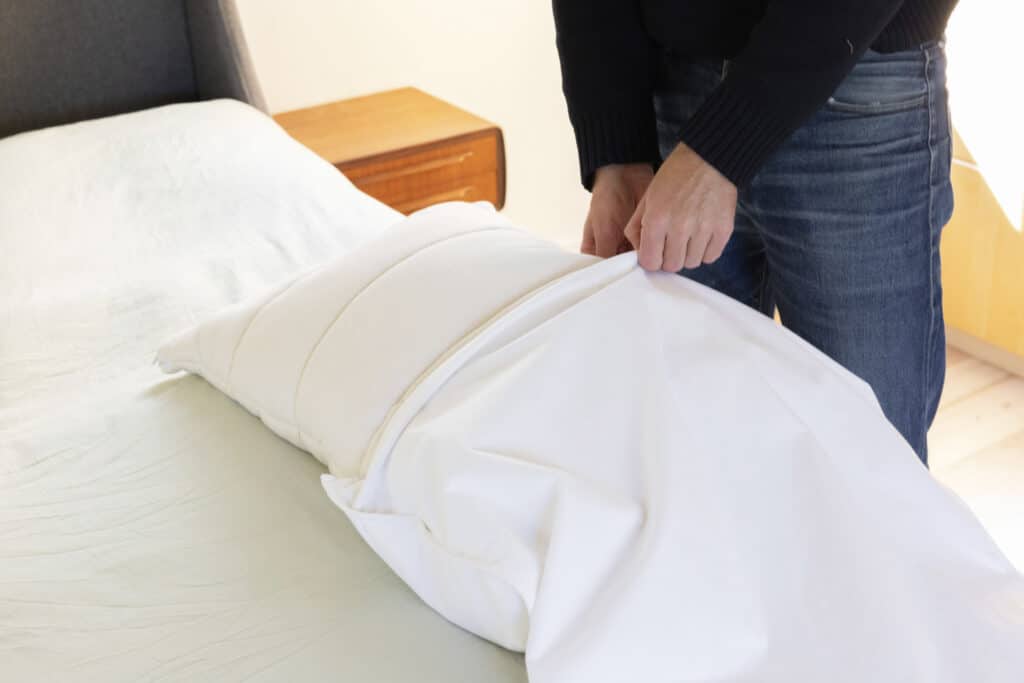Recycled plastic pillows are all the rage these days, and have even gone mainstream with Marriott rolling them out in their hotels as an “Eco-Pillow.” While the goal of getting plastics out of our oceans is laudable, here is why we won’t be sleeping on recycled plastic pillows anytime soon.

There are several ways plastic can make its way into your pillow, none of which are particularly good.
Polyethylene terephthalate pellets (PETs) are small stuffing pellets made from plastic. These and other microbeads made from plastic have been banned for sale in the U.S., but you may still find them in travel pillows, neck pillows, and other ‘cloud’ pillows.
PET and other synthetic polyester-type microbeads have a significant carbon footprint, emitting greenhouse gases at every stage of production. Their production also requires a lot of toxic inputs, including:
- Ethylene glycol
- Phthalates
- Antimony trioxide.
PET pellets and microbeads also take a long time to degrade. Technically, the PET in pillows can be recycled, but most pillows still end up in landfill. This means that the pellets can make their way into rivers, streams, lakes, and oceans, where they harm wildlife. The beads and pellets are a choking hazard for animals and both persist and bioaccumulate, increasing in concentration the higher you go up the food chain.
Recycled plastic pillows
Some bedding companies have begun offering pillows and duvets made with recycled plastic fiber fill. While laudable for trying to clean up waterways and keep plastic out of landfill, this recycled plastic may be teeming with toxic chemicals.
One study looked at pellets made from recycled high-density polyethylene from 24 recycling facilities in 23 countries. The researchers tested the pellets for 18 toxic substances, including 11 brominated flame retardants, 6 benzotriazole UV stabilizers and bisphenol A. The results showed that:
- None of the samples were free from all 18 chemicals
- 21 samples contained all three types of chemicals
- More than half of the samples contained 11 or more chemicals
- 17 samples contained five or more endocrine disrupting chemicals
- 22 of the samples contained BPA
- 22 of the samples contained brominated flame retardants
- All samples contained the UV stabilizer UV-326
- 19 samples contained benzotriazole UV stabilizer UV-327.
The most common brominated flame retardant was DecaBDE, which was listed under the Stockholm Convention for global elimination in 2017. There are no exemptions for DecaBDE in recycled plastic.
There isn’t much research yet on UV stabilizers, but what we have suggests that UV-326 can affect gene expression involved with inflammation and immune function. UV-327 is classified in the EU as a Substance of Very High Concern.
Finally, plastic recycling can product new toxic chemicals, including dioxins. Given this, and the ubiquity of toxic chemicals in recycled plastics, the researchers from the study above suggest that toxic plastic should not be recycled and should instead be considered a non-circular material.